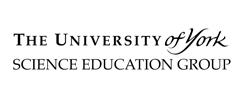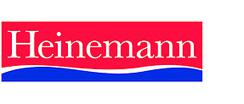- View more resources from this publisher
 University of York Science Education Group
University of York Science Education Group
Communicating Information
A Year Ten module from the Salters’ double award science course. Exercises on codes and signalling methods introduce ideas about communication. A study of the ear leads to sound communication systems such as radio and telephones. Lenses are studied and the formation of images. Studies of pin-hole cameras lead to comparison of the structure of the eye and the single lens camera. Dispersion of light introduces the spectrum. Interference patterns show that light can be considered as a wave form and this leads to study of the electromagnetic spectrum and its applications in communication.
This module was substantially changed for the second edition of the course, so pages from the second edition have been included here to give access to the new activities.
Section 1: Getting an angle on reflections
Revision of Key Stage Three work on mirrors, extended to curved mirrors. Practical work on location of images, lateral inversion and formation of a real image by a concave mirror.
Section 2: Making light work of lenses
Experiments with concave and convex lenses to show formation of images and introduce the idea of focal length. Experiments with a pinhole camera are extended to show how adding a lens can give a brighter image. Text exercises on the structure of the eye, and correcting long or short sight. Experiments relate object and image distance to magnification and apply this to the design of cameras and projectors.
Section 3: Sending the message where you want it
Refraction is explored in more detail and related to the velocity of light in different media. Experiments on total internal reflection lead to study of optical fibres and their use in transmitting messages. The production of a spectrum leads to consideration of the full e/m spectrum, and how different frequencies are used in communication.
Additional materials from the second edition of the Year Ten teachers' and technicians' pack, pages 94-101, 205, 211-218:
Using waves for communication: Revision activities on waves.
Getting sound taped: Stages in making and playing back a tape recording
Waving all over the world: Study of the properties and uses of radio waves and microwaves. Text introduction to communication satellites.
Analogue or digital: Binary code and the representation of signals. How CDs are made and played back.
Show health and safety information
Please be aware that resources have been published on the website in the form that they were originally supplied. This means that procedures reflect general practice and standards applicable at the time resources were produced and cannot be assumed to be acceptable today. Website users are fully responsible for ensuring that any activity, including practical work, which they carry out is in accordance with current regulations related to health and safety and that an appropriate risk assessment has been carried out.
Downloads
-
Communicating information 11.36 MB





